|
|
| Übersicht – Contents: | |
|
|
| Übersicht – Contents: | |
Flagge – Flag: |
|
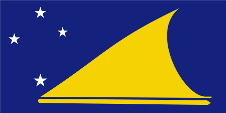 |
seit/since 2008, National- und Staatsflagge – national and state flag, Seitenverhältnis – ratio = 1:2, Quelle/Source, nach/by: Flags of the World |
historische Flaggen – historical Flags: |
|
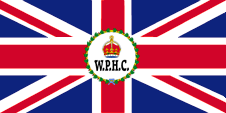 |
1877–1926, Flagge des Hohen Kommissars für den Westpazifik – flag of Western Pacific High Commissioner, Seitenverhältnis – ratio = 1:2, Quelle/Source, nach/by: Flags of the World |
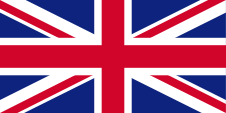 |
1889–1949, Union Flag → quasi Nationalflagge, Flagge Großbritanniens – flag of United Kingdom, Seitenverhältnis – ratio = 1:2, Quelle/Source, nach/by: Flags of the World   |
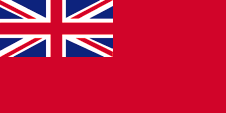 |
1889–1949, |
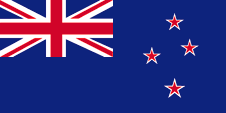 |
1949–2008, Neuseeland – New Zealand, National-, Staatsflagge und Gösch – national and state flag, and jack, Seitenverhältnis – ratio = 1:2, Quelle/Source, nach/by: Flags of the World    |
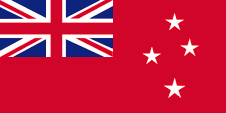 |
1949–2008, Neuseeland – New Zealand, Handelsflagge – merchant flag, Seitenverhältnis – ratio = 1:2, Quelle/Source, nach/by: Flags of the World   |
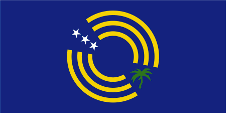 |
1989–2008, inoffizielle Nationalflagge – unofficial national flag, Seitenverhältnis – ratio = 1:2, Quelle/Source, nach/by: Flags of the World |
| Die heutige Flagge von Tokelau wurde am 29.05.2008 angenommen und am 22.10.2009 erstmals offiziell gehisst. Sie zeigt ein blaues Grundtuch mit einem großen stilisierten tiefgelben polynesischen Kanu darauf. In der Oberecke bzw. am Mast finden sich vier weiße fünfzackige Sterne. Das Segelboot ist ein Hinweis auf seine Bewohner. Die vier Sterne sind der Flagge Neuseelands entnommen und erinnern an die Bindungen zum Mutterland. Die Farbtöne den Flagge scheinen definiert, zumindest lässt sich eine Aussage finden, dass das Blau der Flagge dem Blau in der Flagge Neuseelands entspricht. Damit wäre das Farbsystem des Britischen Verteidigungsministeriums gültig. Das sieht vor, für Blau = Pantone 280 c und für Tiefgelb = Pantone 116 c. Das Blau steht für den Himmel und den Pazifik, in dem die Inselgruppe liegt. Die vor dem 29.05.2008 verwendete Flagge war inoffiziell. Sie zeigte ein einfarbiges blaues Grundtuch, belegt mit einem dreifachen konzentrischen gelben Ring, der an einer Stelle durch drei Sterne, und an der gegenüberliegenden Stelle durch eine grüne Palme unterbrochen wurde. Die drei Sterne standen für die drei Inseln, aus denen Tokelau besteht: Atafu, Nukunono und Fakaofo. Die Gestaltung der Flagge sollte an ein Atoll erinnern. Als die Inseln 1877 ein britisches Protektorat wurden, wurden sie dem Hohen Kommissar für den Westpazifik unterstellt, dem die noch unorganisierte britische Kolonialverwaltung im Pazifik übertragen war. Es gab also keine offizielle britische Verwaltung und somit keine Flaggen britischer Behörden. Am 22.06.1889 wurde die britische Flagge auf Tokelau offiziell gehisst. Als die Inseln 1916 für die Verwaltung den Gilbert- und Ellice-Inseln angeschlossen wurden, gab es auch dort noch keine Flaggen von Verwaltungsbehörden (bis 1937), lediglich einen Britischen Resident Commissioner. Es wurde auch hier seit 1892 lediglich die britische Flagge (Union Flag) gehisst. Ab 1926 unterstand die Verwaltung dem Administrator für Westsamoa in Neuseeland und 1949 wird Tokelau der Verwaltung durch Neuseeland unterstellt, damit wurden die Flaggen Neuseelands verbindlich, denn eine eine eigene Flagge gab es offiziell bis 2008 – dem Jahr der Einführung der heutigen Flagge – nicht. |
The current flag of
Tokelau was adopted on 29th of May in 2008 and was officially hoisted for
the first time on 22nd of October in 2009. It shows a blue base bunting with
a large stylized deep yellow Polynesian canoe on it. There are four white
five-pointed stars in the upper corner or on the mast. The sailboat is a
reference to its inhabitants. The four stars are taken from the New Zealand
flag and are a reminder of the ties to the motherland. The colours of the
flag seem to be defined, at least there is a statement that the blue of the
flag corresponds to the blue in the flag of New Zealand. This would mean
that the British Ministry of Defense colour system would be valid. This
purports for blue = Pantone 280 c and for deep yellow = Pantone 116 c. The
blue represents the sky and the Pacific Ocean in which the archipelago is
located. The flag used before 29th of May in 2008 was unofficial. It showed a plain blue base bunting, covered with a triple concentric yellow ring, which was interrupted at one point by three stars and at the opposite point by a green palm tree. The three stars represented the three islands that make up Tokelau: Atafu, Nukunono and Fakaofo. The design of the flag was intended to be reminiscent of an atoll. When the islands became a British protectorate in 1877, they were placed under the jurisdiction of the High Commissioner for the Western Pacific, who was responsible for the still unorganized British colonial administration in the Pacific. So there was no official British administration and therefore no flags from British authorities. On 22nd of June in 1889, the British flag was officially raised on Tokelau. When the islands were joined to the Gilbert and Ellice Islands for administration in 1916, there were no administrative flags there either (until 1937), only a British Resident Commissioner. Only the British flag (Union Flag) has been flown here since 1892. From 1926, the administration was subordinated to the Administrator for Western Samoa in New Zealand and in 1949 Tokelau was placed under the administration of New Zealand, which meant that New Zealand's flags had been to use, as there was no official flag of its own until 2008, the year the current flag was introduced. |
| Quelle/Source: Flags of the World, Wikipedia (D), Volker Preuß | |
Wappen – Coat of Arms: |
|
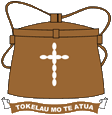 |
seit/since 2008, Emblem von Tokelau – Badge of Tokelau, Quelle/Source, nach/by: Wikipedia (EN) |
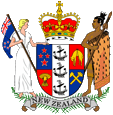 |
bis/to 2008, Wappen von Neuseeland – coat of arms of New Zealand, Quelle/Source: Corel Draw 4 |
| Das heutige Wappen wurde – wie die Flagge – am 29.05.2008 angenommen. Es zeigt eine Tuluma, eine traditionelle, aus Holz geschnitzte "Angelgerätekiste" aus Tokelau, wie sie von lokalen Fischern verwendet wird. In der Mitte erscheint ein weißes, christliches Kreuz und die Inschrift darunter zeigt das Landesmotto: "Tokelau mo te Atua" → "Tokelau für Gott". | The today's coat of arms was – like the flag – adopted on 29th of May in 2008. It shows a Tuluma, a traditional Tokelau carved wooden "fishing tackle box" used by local fishermen. A white, Christian cross appears in the middle and the inscription below shows the country's motto: "Tokelau mo te Atua" → "Tokelau for God". |
| Quelle/Source: Wikipedia (EN) | |
Landkarte – Map: |
Lage – Position: |
Landkarte des Landes – Map of the Country: |
|
|
| Zahlen und Fakten – Numbers and Facts: | |
|
|
|
|
|
|
|
|
|
|
|
|
|
|
|
|
|
17. Jahrhundert
· Besiedelung durch Polynesier 21.06.1765 · Entdeckung der Insel Atafu durch den britischen Seefahrer John Byron, er nennt sie Duke of York Island 12.06.1791 · Entdeckung der Insel Nukunonu durch den britischen Seefahrer Edward Edwards, er nennt sie Duke of Clarence Island 14.02.1839 · der US-amerikanische Seefahrer Stephen R. Crocker besucht die Insel Fakaofo und nennt sie nach den Eignern des Schiffes DeWolf Island 28.01.1841 · eine US-amerikanische Forschungsexpedition landet auf der Insel Fakaofo, sie wird Bowditch Island genannt 12.02.1863 · Peruanische Sklavenjäger entführen die Hälfte der Bevölkerung von Fakaofo In den Folgejahren werden die Inseln unter dem geographischen Begriff Union-Inseln zusammengefasst, allerdings unter Einbindung weiterer Inseln, so Olohega (Swains Island oder auch Gente Hermosa oder Olosenga), Pukapuka (Danger Island), Nassau (Lydra Island) und der Suwarrow-Insel. Die Union-Inseln wurden bereits Ende des 19. Jahrhunderts (unter Verwendung des einheimischen Begriffs) als Tokelau-Inseln bezeichnet. Die USA beanspruchen in dieser Zeit einige der Inseln und einige werden zweitweise sogar von den USA besetzt um Guanoabbau zu betreiben. 1877 · Großbritannien erklärt die Inseln zum Protektorat und zum Bestandteil der Britischen Westpazifischen Territorien 1889 · offizielle Inbesitznahme durch Großbritannen 1893 · die Verwaltung der Union-Inseln wird dem britischen Protektorat der Gilbert- und Ellice-Inseln übertragen (heute Kiribati und Tuvalu) 29.02.1916 · die Union-Inseln werden den Gilbert- und Ellice-Inseln angegliedert 1926 · die Union-Inseln werden von den Gilbert- und Ellice-Inseln abgetrennt und dem Generalgouverneur von Neuseeland unterstellt, die Insel Olohega (Swains Island) wird an die USA abgetreten 11.02.1926 · die Union-Inseln werden aus den Britischen Westpazifischen Territorien ausgegliedert und dem Administrator für Westsamoa in Neuseeland unterstellt 1946 · die Union-Inseln werden offiziell in Tokelau-Inseln umbenannt 01.01.1949 · Tokelau wird Neuseeland angeschlossen 09.12.1976 · die Tokelau-Inseln werden offiziell in Tokelau umbenannt 02.12.1980 · Unterzeichnung des Tokehega-Vertrags zwischen Neuseeland und den USA, die USA erkennen Tokelau an, die Insel Olohega (Swains Island) wird erneut den USA zugesprochen 15.02.2006 · eine Volksabstimmung zur Unabhängigkeit scheitert 2006 · ein Verfassungsentwurf nennt das von den USA verwaltete Olohega (Swains Island) als Bestandteil des Landes Oktober 2007 · eine Volksabstimmung zur Unabhängigkeit scheitert |
|
17th century
· settlement by Polynesians 21st of June in 1765 · discovery of Atafu Island by the British seafarer John Byron, he named it Duke of York Island 12th of June in 1791 · discovery of Nukunonu Island by the British seafarer Edward Edwards, he named it Duke of Clarence Island 14th of February in 1839 · the US-American seafarer Stephen R. Crocker visits the island of Fakaofo and names it DeWolf Island after the owners of the ship 28th of January in 1841 · an US-american research expedition debarks on Fakaofo Island, they named it Bowditch Island 12th of February in 1863 · Peruvian slave hunters kidnap half of Fakaofo's population In the afteryears the islands became summarized under the geographic term Union Islands, but inclusive further islands, so Olohega (Swains Island or even Gente Hermosa or Olosenga), Pukapuka (Danger Island), Nassau (Lydra Island) and Suwarrow Island. The Union Islands were already called Tokelau Islands (by use of the indigenous term) at the end of the 19th century. The USA claimed at that point in time some of the islands and some had been even occupied by the USA to ply guano mining. 1877 · United Kingdom declares the islands a protectorate and part of the British Western Pacific Territories 1889 · official appropriation by United Kingdom 1893 · the administration of the Union Islands becomes handed over to the British protectorate of the Gilbert and Ellice Islands (today Kiribati and Tuvalu) 29th of February in 1916 · the Union Islands become affiliated to the Gilbert and Ellice Islands 1926 · the islands become separated from the Gilbert and Ellice Islands and subordinated under the Governor General of New Zealand, Olohega Island (Swains Island) becomes ceded to the USA 11th of February in 1926 · the Union Islands become separated from the British Western Pacific Territories and subordinated under the High Commissioner for Western Samoa 1946 · the Union Islands became officially renamed in Tokelau Islands 1st of January in 1949 · the Tokelau Islands become affiliated to New Zealand 9th of December in 1976 · the Tokelau Islands become officially renamed in Tokelau 2nd of December in 1980 · Tokehega Treaty between New Zealand and the USA, the USA recognize Tokelau, Olohega Island (Swains Island) becomes once more allocated to the USA 15th of February 2006 · a referendum for independence fails 2006 · a draft for a constitution designates the by the USA administered Olohega Island (Swains Island) as a component of the country October 2007 · a referendum for independence fails |
| Quelle/Source: World Statesmen, Wikipedia (DE), Volker Preuß |
| Zunächst wurde die Inselgruppe "Union-Inseln" genannt, bis sie 1946 in Tokelau-Inseln umbenannt wurden. 1976 werden die Inseln offiziell in Tokelau umbenannt. Der Name "Tokelau" bedeutet in der Sprache der Einheimischen "Nordwestwind" oder auch "Blattspitze". |
The archipelago was
initially called "Union Islands" until they were renamed in Tokelau Islands
in 1946. In 1976 the islands were officially renamed in Tokelau. The
name "Tokelau" means "northwest wind" or "leaf tip" in the local language. |
| Quelle/Source: Wikipedia (DE) | |